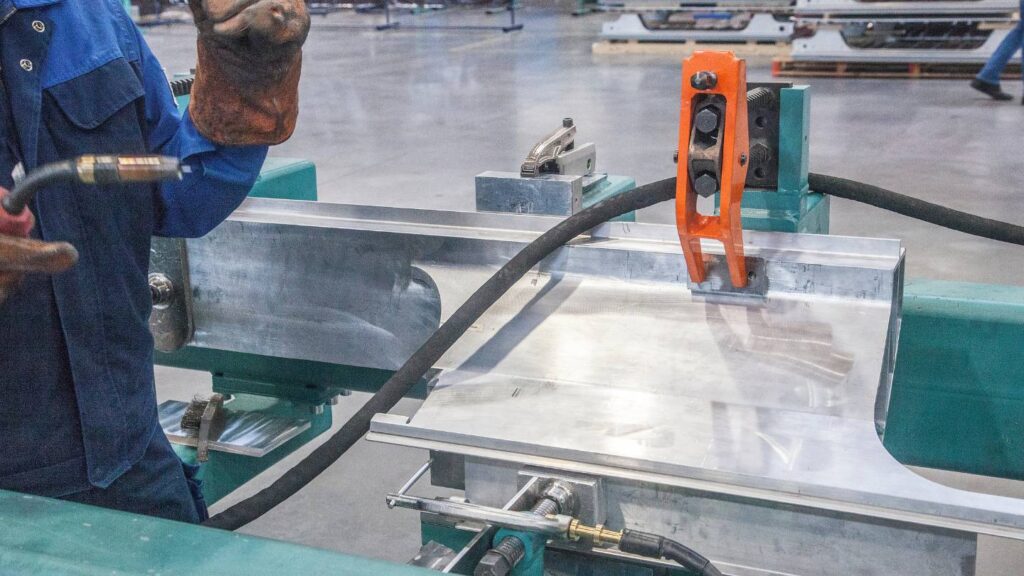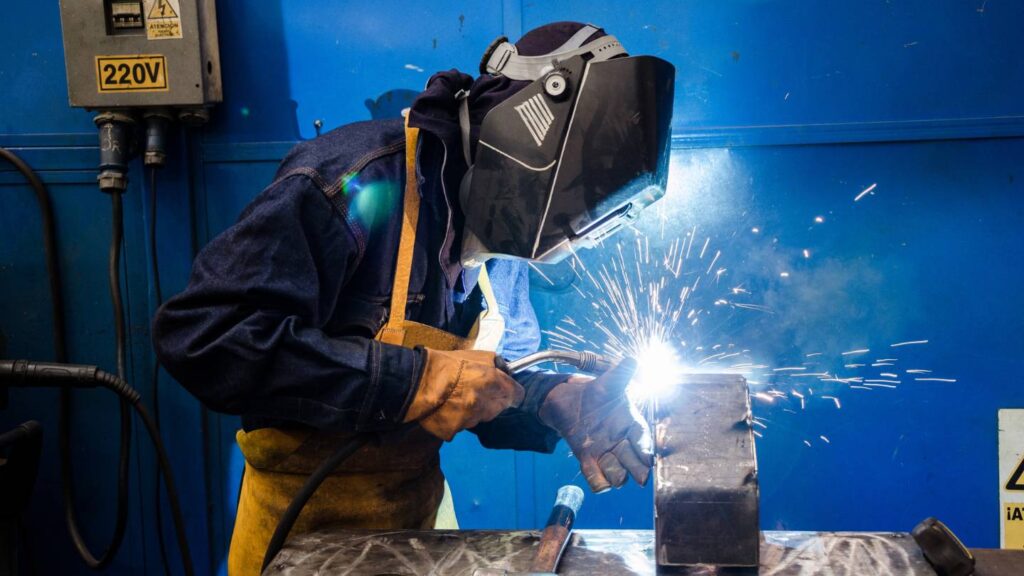Aluminum is a highly versatile material that is widely used across various industries due to its unique properties. Its excellent strength-to-weight ratio, remarkable corrosion resistance, and high thermal and electrical conductivity make it an ideal choice for fabrication processes.
This article will explore the many advantages of using aluminium in fabrication, focusing on its key properties, the processes involved, and the industries that benefit most from its use.
Let’s get straight to the point
Aluminium is a versatile material widely used in various industries due to its excellent strength-to-weight ratio, corrosion resistance, malleability, and high recyclability. These properties make it ideal for applications in the aerospace, automotive, construction, and electrical sectors.
The fabrication process involves methods like extrusion, stamping, milling, and welding, allowing the creation of complex and durable components.
Aluminium’s environmental benefits, such as its recyclability and reduced energy consumption during production, further enhance its appeal as a sustainable material in modern manufacturing. Despite some limitations, aluminium remains a top choice in fabrication due to its unique advantages.

What Is Aluminium Fabrication?
Aluminium fabrication refers to the process of forming and shaping aluminium into desired forms or structures. This involves cutting, shaping, welding, and assembling aluminium components to create the final product.
Due to its lightweight and durable nature, aluminium is a preferred material in industries such as construction, aerospace, automotive, and manufacturing. Aluminium fabrication can produce a wide range of products, including window frames, doors, panels, roofing systems, automotive parts, and aircraft components.
The Key Advantages of Aluminium in Fabrication
Strength-to-Weight Ratio
One of the most significant advantages of aluminum is its excellent strength-to-weight ratio. Although aluminium is surprisingly lightweight, it offers tremendous strength, making it ideal for applications where weight is a crucial factor.
This property is particularly beneficial in the transportation, aerospace, and automotive industries, where reducing weight can improve overall performance and fuel efficiency without compromising durability.
Corrosion Resistance
Aluminium boasts remarkable resistance to corrosion, which is one of its most valuable properties. It naturally forms an oxide coating that protects it from rusting and corrosion, even in harsh conditions.
This makes aluminium an excellent choice for outdoor constructions, boats, and other components exposed to moisture or extreme weather. The natural oxide layer ensures that aluminium remains intact and reliable over time, making it a durable material for long-term use.
Malleability and Adaptability
Another significant advantage of aluminium in fabrication is its malleability and adaptability. Aluminium can be easily shaped, bent, and welded into a wide range of shapes and profiles, making it suitable for creating complex and customised designs.
Its malleability allows for intricate designs without sacrificing strength, enabling the production of components that are both functional and aesthetically pleasing.
Recyclability and Environmental Impact
Aluminium is also known for its recyclability. It can be recycled multiple times without losing its original properties, making it an eco-friendly choice for fabrication. The increasing focus on sustainable manufacturing practices aligns perfectly with aluminium’s recyclability, which helps minimise energy consumption and waste.
As industries strive for greener production methods, aluminium’s recyclability is a significant advantage, contributing to the reduction of the environmental footprint in manufacturing.
Aluminium Fabrication Procedures
Extrusion
Extrusion is a common process in aluminum fabrication, where aluminum is pressed through a die to create specific shapes and profiles. This process is ideal for producing pipes, profiles, and other components with complex shapes.
Stamping
Stamping involves cutting aluminium into desired shapes and sizes using a stamping machine. This method is commonly used to manufacture automotive parts, household appliance components, and electronic equipment.
Milling
Milling is a precision process where a milling machine shapes aluminium to exact dimensions. This technique is often used in the production of aircraft components, moulds, and other items requiring high precision.
Drilling
Drilling involves creating threads, holes, or other shapes in aluminium using a drill press or punch. This process is essential for producing components that require precise holes or threads for assembly.
Welding
Welding is a critical process in aluminum fabrication, involving the joining of aluminum components through techniques such as TIG, MIG, and arc welding. This method is often used to produce large components for vehicles, construction equipment, and machinery.
Surface Treatment
Aluminium can undergo various surface treatment processes to enhance its properties. Anodising, electrophoretic coating, and powder coating are some of the techniques used to improve corrosion resistance, oxidation resistance, and aesthetic appeal. These treatments extend the service life of aluminium products and add value to the final components.

Advantages of Aluminium in Various Industries
Aerospace Industry
In the aerospace industry, aluminium’s lightweight nature and high strength make it a crucial material for manufacturing aircraft components. The high strength-to-weight ratio of aluminium alloys allows for the creation of strong yet lightweight parts, which are essential for improving fuel efficiency and performance in aircraft.
Automotive Industry
The automotive industry benefits significantly from aluminium’s properties. The lightweight nature of aluminum helps reduce the overall weight of vehicles, leading to improved fuel efficiency and performance. Additionally, aluminium’s corrosion resistance ensures that automotive parts have a longer lifespan, even when exposed to harsh environmental conditions.
Construction Industry
In the construction industry, aluminium is used for its durability and aesthetic appeal. Its resistance to corrosion makes it ideal for outdoor applications, such as window frames, roofing systems, and cladding. Additionally, aluminium’s malleability allows architects and designers to create unique and intricate designs, enhancing the visual appeal of buildings.
Electrical Industry
Aluminum’s high electrical conductivity makes it an attractive alternative to copper in many electrical applications. Despite being less conductive than copper, aluminium is more affordable and offers excellent corrosion resistance, making it suitable for use in electrical components and wiring systems.
Environmental Benefits of Aluminium
High Recyclability
Aluminum is one of the most recyclable materials available, with nearly 75% of aluminium products containing recycled content. This high level of recyclability makes aluminium a sustainable choice for fabrication, reducing the need for new raw materials and conserving natural resources.
Reduced Energy Consumption
Recycling aluminium requires significantly less energy than producing new aluminium from raw materials. This reduction in energy consumption not only lowers production costs but also minimises the environmental impact of manufacturing processes.
Conclusion
Aluminum is a highly versatile material that offers numerous advantages in fabrication processes. Its lightweight, corrosion resistance, malleability, and adaptability make it a preferred choice across various industries, including aerospace, automotive, and construction.
Aluminum’s recyclability and environmental benefits further enhance its appeal, making it a sustainable and cost-effective material for modern manufacturing.
As industries continue to prioritise lightweight, durable, and environmentally friendly materials, aluminium is likely to remain a dominant force in the world of fabrication. Whether for creating complex aerospace components, durable automotive parts, or aesthetically pleasing architectural designs, aluminium’s unique properties make it an invaluable material with a wide range of applications.

